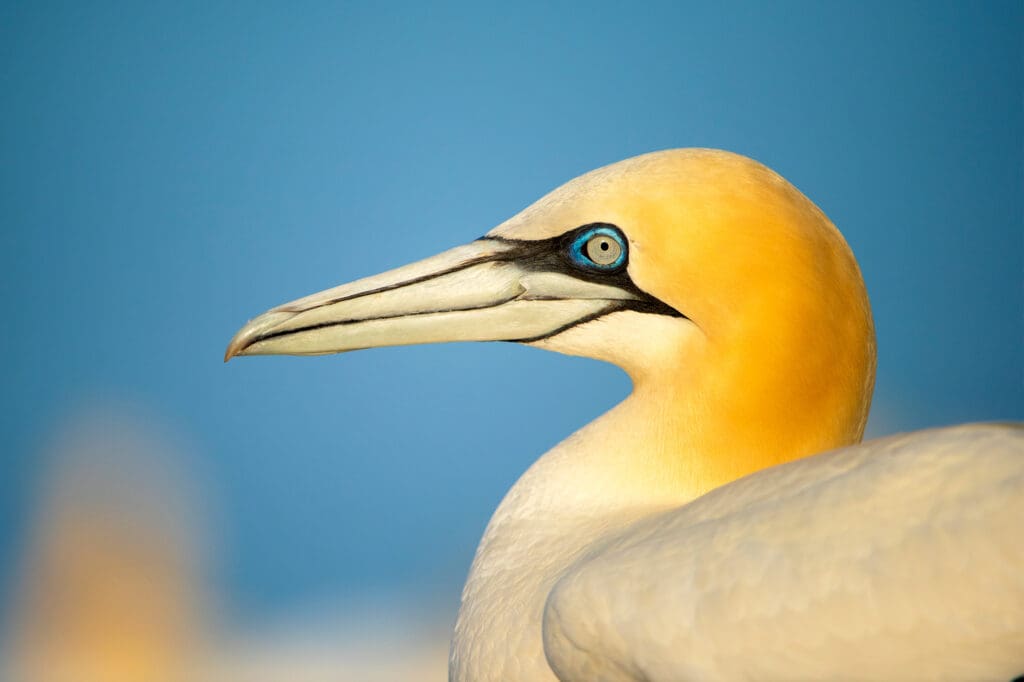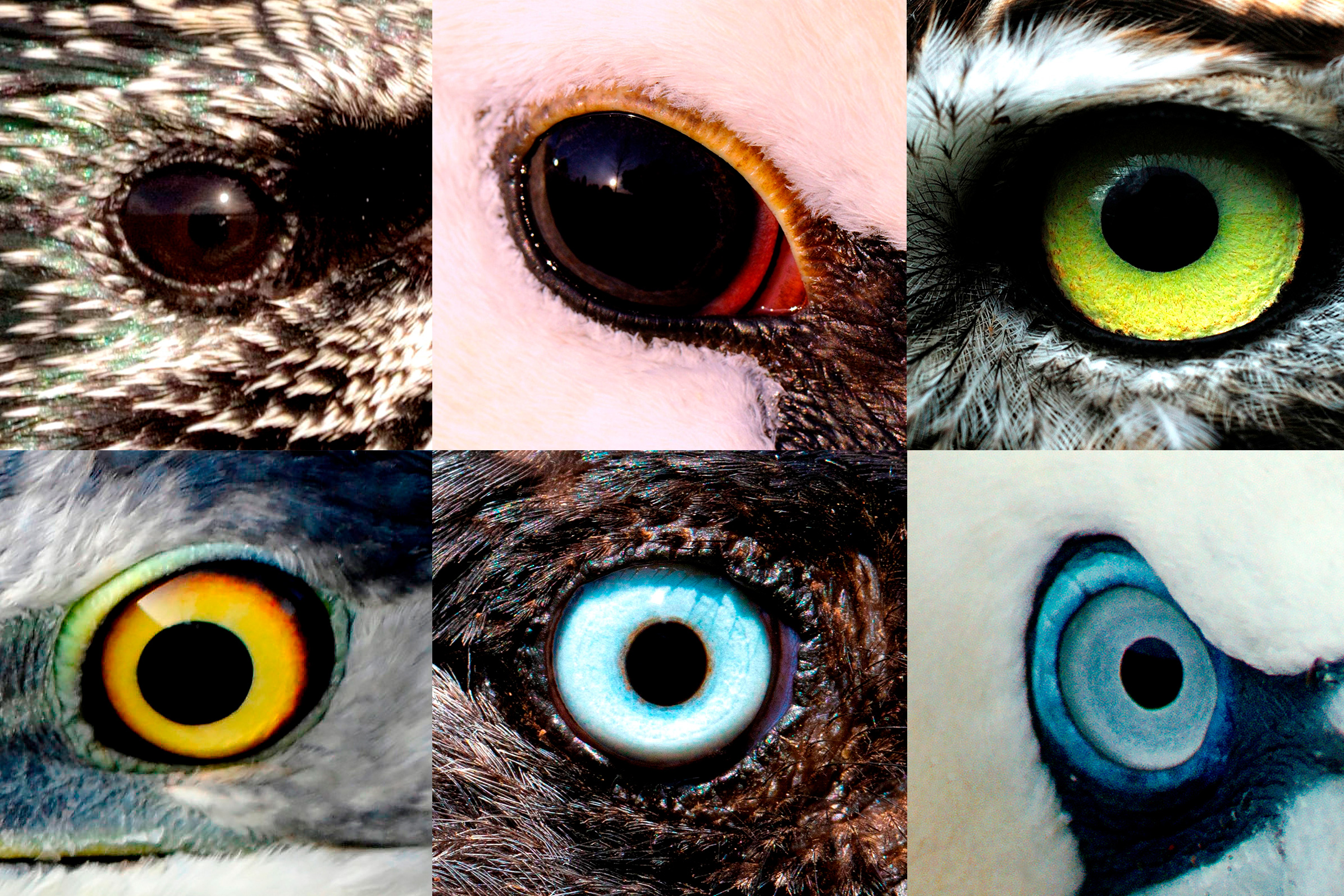The feathers of birds are so colourful that it’s easy to overlook that other parts of their anatomy are vibrant, too. Eye colour is so sketchily studied that it seems scientists have forgotten all about it! But UK birds exhibit many hues, from the black iris of a Stock Dove to the blue of a Gannet, the dark red of a Swallow and the yellow of a Grey Heron. The colours may vary within a family and within a species. For example, a young Sparrowhawk has yellow eyes, which turn red with age. Certain families of birds, such as ducks, birds of prey and cormorants exhibit a particularly impressive range of colours. Overall, most birds have dark eyes and bright colours are the exception; only among herons is brightness a majority trend.
Most colours result from pigments and, surprisingly, some of these are not found in feathers at all. While melanins (dark) and carotenoids (bright) are ubiquitous in feathers, pteridines and purines (bright) are only found in the iris. The colour is also produced by living cells, called chromatophores, rather than being deposited on inert feathers. The picture is also complicated by structural colours, which produce blues, and even by the haemoglobin of the blood supply, which can redden eyes.
Why, though, should eye colour vary so much? This is a difficult question to answer and there are few studies investigating the subject. Among owls, the most nocturnal species (including Tawny and Barn Owls) have dark eyes, as opposed to the yellow eyes of Little and Short-eared Owls. There might be a correlation between the type of foraging and eye colour.
However, the main purpose is likely to be signalling. The very fact that, in some species, eye colour differs between sexes (red in male Pochards and brown in females, for example) suggests a courtship function, and the change of colour with age could flag dominance. The unusual grey eyes of Jackdaws apparently indicate that a nest cavity is in use and defended.
The very fact that, in some species, eye colour differs between sexes suggests a courtship function
Several intriguing studies have correlated colours with general health. The yellowness of the female Little Owl’s eyes (a carotenoid pigment) is a predictor of nesting success. And last year, many people noticed that when a Gannet had recovered from bird flu, its eyes had darkened from blue to almost black. This is undoubtedly a subject that deserves a great deal more study.
Starling
Mainly dark in male; reddish brown centre with grey rings in females. Useful to tell sexes apart, may declare nest-hole ownership.
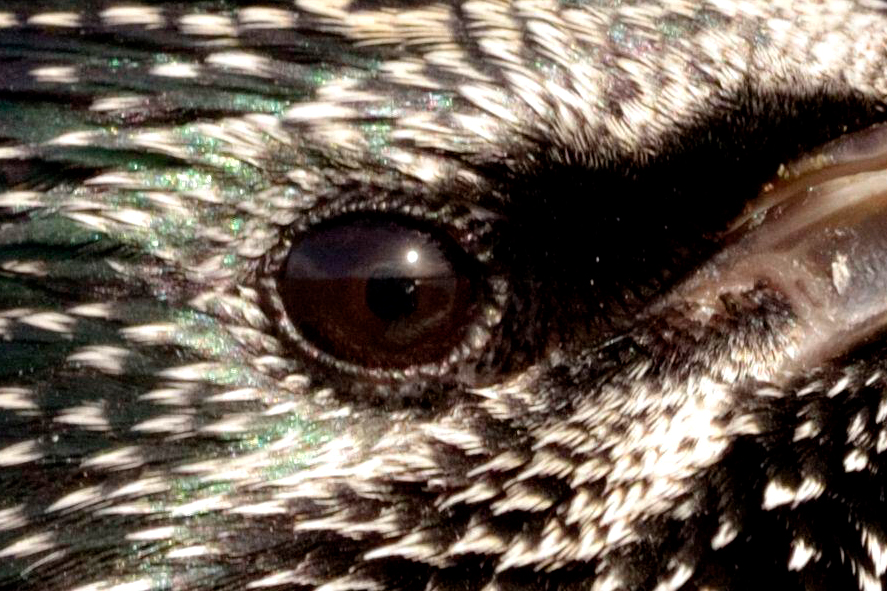
Starling. Photo: Patrick Joseph (Alamy Stock Photo)
Jackdaw
Melanin and no other pigment, but the colour is also caused by a bundle of melanin fibres. Could signal nest-hole ownership.
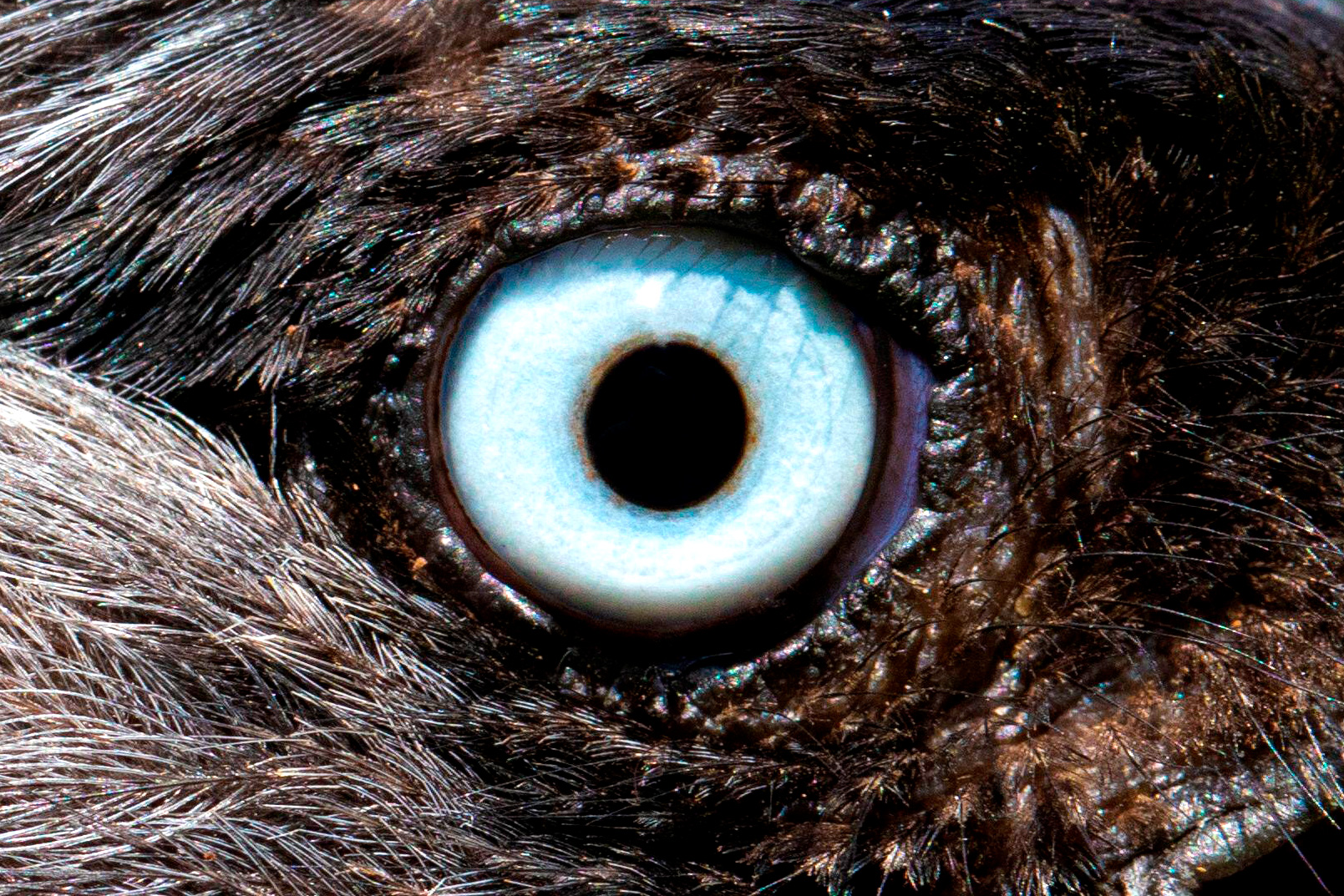
Jackdaw. Photo: Joe Blossom (Alamy Stock Photo)
Grey Heron
There is no melanin, but carotenoid (bright yellow) and either purines or pteridines (pale yellow). Colour may have display function.
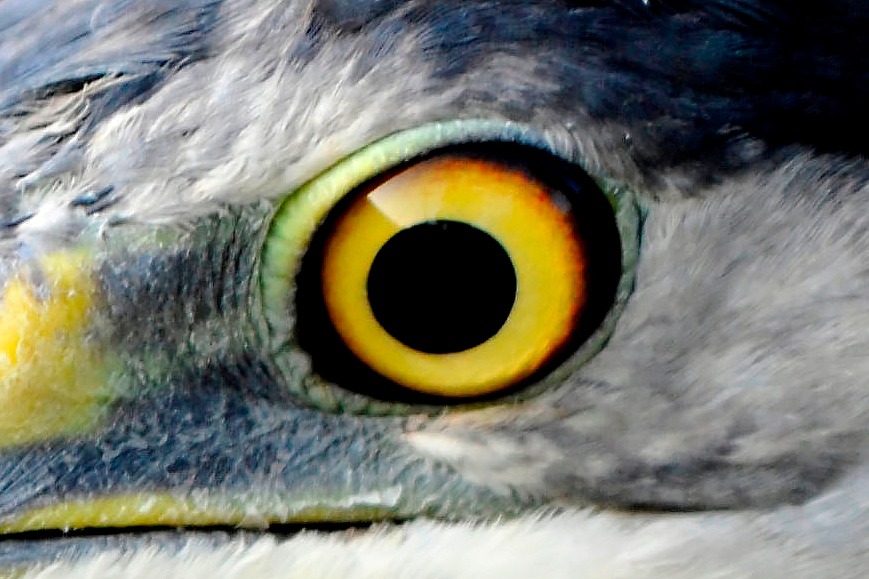
Grey Heron. Photo: imageBROKER.com (Alamy Stock Photo)
Little Owl
Melanin is present as well as carotenoids and colourless purines and pteridines. Carotenoid colour may show fitness.
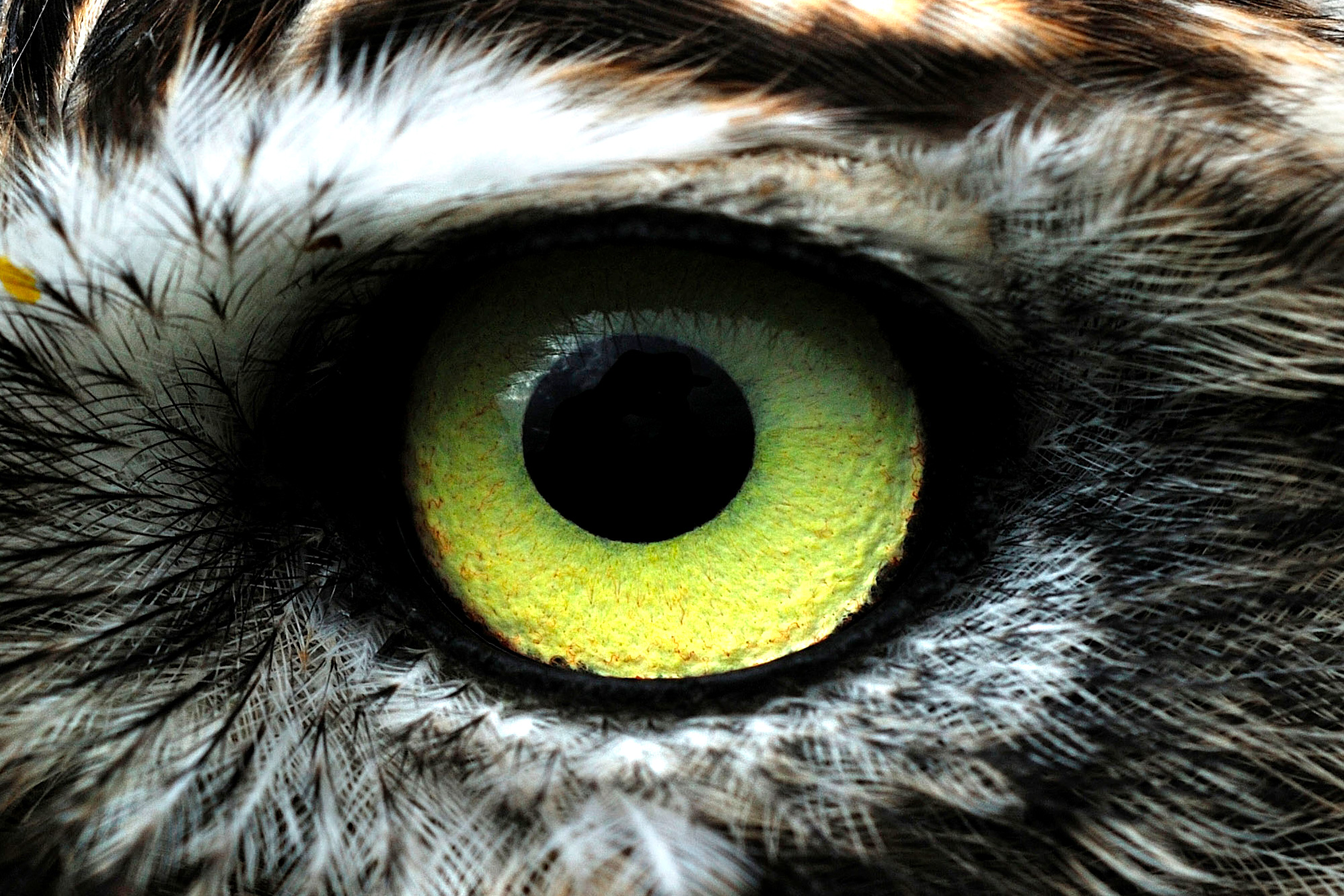
Little Owl. Photo: Colin Varndell (Alamy Stock Photo)
Mute Swan
The eyes are grey. There are no pigments except carotenoids, but there are also colourless oil droplets.
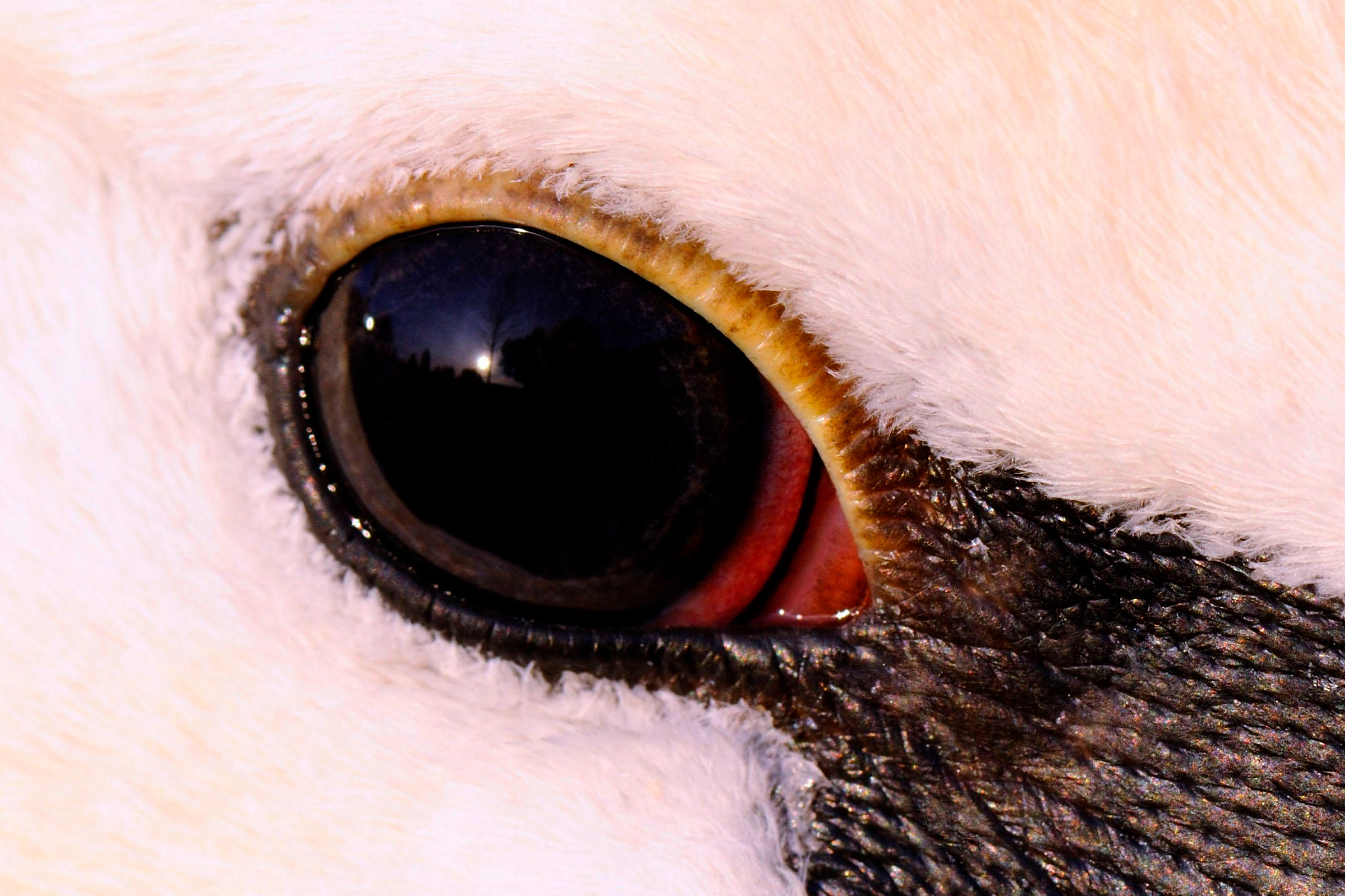
Mute Swan. Photo: Mauritius Images (Alamy Stock Photo)
Gannet
Blue eyes likely to have melanin as well as structural refractive colours. Colour change to black seen in those recovered from avian flu.
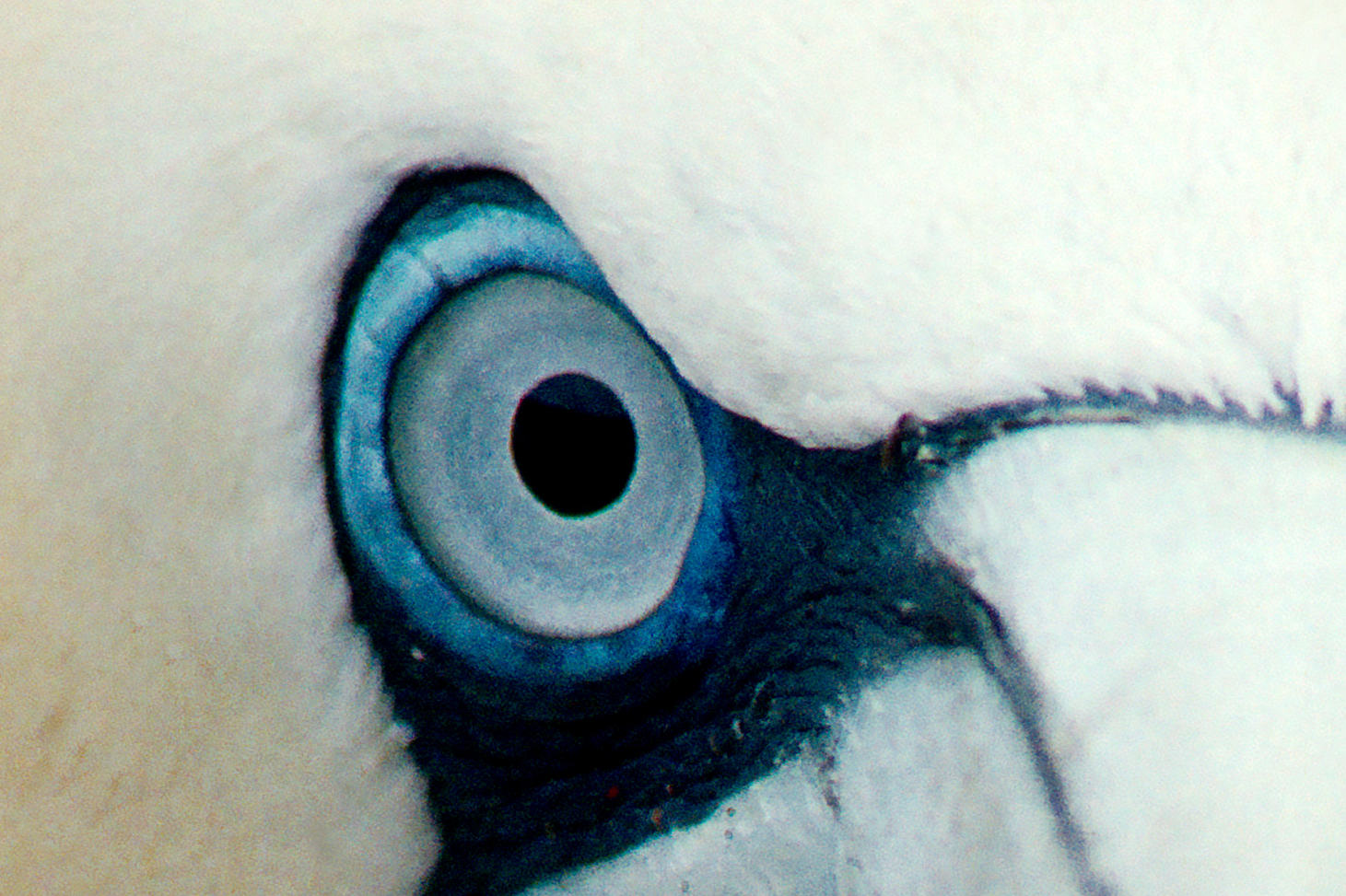
Gannet. Photo: Laurie Campbell (rspb-images.com)
You might also like

Birds are dinosaurs
